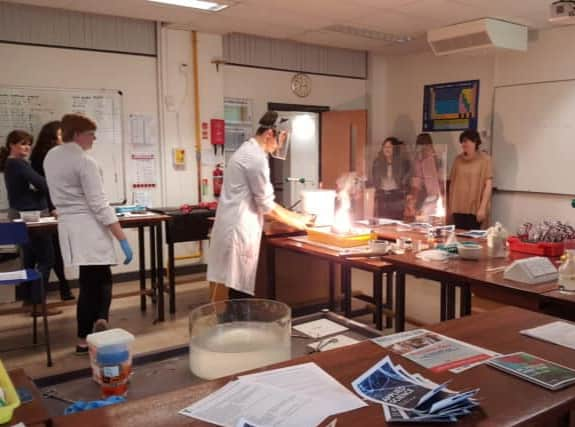More disadvantaged young people in Greater Manchester not in education, jobs or apprenticeships, data shows
and live on Freeview channel 276
The numbers of disadvantaged young people not in education, employment or training are going up across Greater Manchester, data shows.
Analysis of the most up-to-date Government data by the charity Nacro shows concerning disadvantage gaps across the city-region and fewer opportunities for those who already face barriers to success to achieve.
Advertisement
Hide AdAdvertisement
Hide AdThe data looks at how many young people who were in care or eligible for free school meals were in employment or had a job or an apprenticeship compared to their peers who grew up without the same disadvantages.
Nacro is now calling on the Government to continue supporting disadvantaged students for longer than is currently the case.
What does the data show for Greater Manchester?
The latest data which has been published covers the year 2019-20, so the period immediately before the Covid-19 pandemic began.
Due to the amount of data which has to be analysed these statistics are published a year or two after the period under consideration.
Advertisement
Hide AdAdvertisement
Hide AdThe data shows that of the 10 boroughs in Greater Manchester four had more disadvantaged young people in jobs, apprenticeships or still learning in 2019-20 than the year before. These were Trafford, Oldham, Rochdale and Salford, with theother six all seeing reductions.
In Bolton the percentage of disadvantaged young people in work, training or study fell from 90.1% in 2018-19 to 86.9% in 2019-20.
In Manchester the reduction was from 88.5% to 85.7%, while in Stockport it fell from 90% to 84.5%.
This was also the lowest rate recorded in Greater Manchester for 2019-20 and the second-lowest in the North West, with only Cheshire West having fewer disadvantaged young people in work, training or study.
Advertisement
Hide AdAdvertisement
Hide AdThe highest rate across the city-region for young people who had been in care or qualified for free school meals being in apprenticeships, employment or education was 90.9% in Trafford.
Every one of the 10 boroughs in Greater Manchester has a gap in the percentage rates between disadvantaged and non-disadvantaged young people in jobs, apprenticeships or further education.
The smallest gap was 6.1% in Rochdale while the biggest was 11.1% in Stockport.
What has been said about the data?
Nacro, which runs an education and skills centre in Bolton, says it is campaigning to remove the barriers which hold back disadvantaged young people from achieving their potential.
Advertisement
Hide AdAdvertisement
Hide AdIt wants the Government to introduce an extension to the Pupil Premium funding for disadvantaged students so it runs until they are 18, rather than ending at 16 as is currently the case.


Elise Temple, director of education and skills at Nacro, said: “The disadvantage gap remains stubbornly wide. Despite Government promises to level up education and help disadvantaged young people, yesterday’s statistics show more needs to be done.
“We must introduce a Pupil Premium Plus, giving schools and colleges specific funding for each disadvantaged young person. This would enable them to tailor help to the pupil’s needs, be it tutoring, holistic help, or extra support.
“This is the only way we can truly level the playing field for all pupils and ensure that no young person is left behind.”
The Department for Education has been approached for comment.
Comment Guidelines
National World encourages reader discussion on our stories. User feedback, insights and back-and-forth exchanges add a rich layer of context to reporting. Please review our Community Guidelines before commenting.
